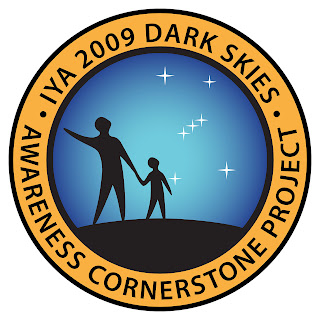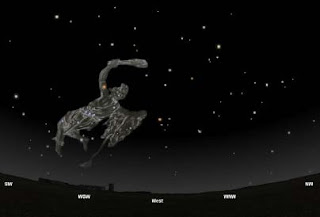Earth's sidereal day also differs from its rotation period relative to the background stars by the amount of precession in right ascension during one day (8.4 ms). Its J2000 mean value is 23h56m4.090530833s. Etymology of sidereal is from Latin "sidereus" from sidus, sider- = star. Therefore, its meaning relates to a measurement of time relative to the position of the stars.
Definition
 Local Sidereal Time (LST) = RA + HA
Local Sidereal Time (LST) = RA + HA Greenwich Sidereal Time (GST) is the LST at the Greenwich Meridian
Sidereal time and solar time
Solar time is measured by the apparent diurnal motion of the sun, and local noon in solar time is defined as the moment when the sun is at its highest point in the sky (exactly due south or north depending on the observer's latitude and the season). The average time taken for the sun to return to its highest point is 24 hours.
During the time needed by the Earth to complete a rotation around its axis (a sidereal day), the Earth moves a short distance (approximately 1°) along its orbit around the sun. Therefore, after a sidereal day, the Earth still needs to rotate a small extra angular distance before the sun reaches its highest point. A solar day is, therefore, nearly 4 minutes longer than a sidereal day.
The stars, however, are so far away that the Earth's movement along its orbit makes a generally negligible difference to their apparent direction (see, however, parallax), and so they return to their highest point in a sidereal day. A sidereal day is almost 4 minutes shorter than a mean solar day.
Another way to see this difference is to notice that, relative to the stars, the Sun appears to move around the Earth once per year. Therefore, there is one less solar day per year than there are sidereal days. This makes a sidereal day approximately 365.24⁄366.24 times the length of the 24-hour solar day, giving approximately 23 hours, 56 minutes, 4.1 seconds (86,164.1 seconds).
 Sidereal time vs solar time. Above left: a distant star (the small red circle) and the Sun are at culmination, on the local meridian. Centre: only the distant star is at culmination (a mean sidereal day). Right: few minutes later the Sun is on the local meridian again. A solar day is complete.
Sidereal time vs solar time. Above left: a distant star (the small red circle) and the Sun are at culmination, on the local meridian. Centre: only the distant star is at culmination (a mean sidereal day). Right: few minutes later the Sun is on the local meridian again. A solar day is complete.Precession effects
The Earth's rotation is not simply a simple rotation around an axis that would always remain parallel to itself. The Earth's rotational axis itself rotates about a second axis, orthogonal to the Earth's orbit, taking about 25,800 years to perform a complete rotation. This phenomenon is called the precession of the equinoxes. Because of this precession, the stars appear to move around the Earth in a manner more complicated than a simple constant rotation.
For this reason, to simplify the description of Earth's orientation in astronomy and geodesy, it is conventional to describe Earth's rotation relative to a frame which is itself precessing slowly. In this reference frame, Earth's rotation is close to constant, but the stars appear to rotate slowly with a period of about 25,800 years. It is also in this reference frame that the tropical year, the year related to the Earth's seasons, represents one orbit of the Earth around the sun. The precise definition of a sidereal day is the time taken for one rotation of the Earth in this precessing reference frame.
Exact duration and its variation
According to Aoki et al., an accurate value for the sidereal day at the beginning of 2000 is 1⁄1.002737909350795 times a mean solar day of 86,400 seconds, which gives 86,164.090530833 seconds. For times within a century of 1984, the ratio only alters in its 11th decimal place. This web-based sidereal time calculator uses a truncated ratio of 1⁄1.00273790935.
Because this is the period of rotation in a precessing reference frame, it is not directly related to the mean rotation rate of the Earth in an inertial frame, which is given by ω=2π/T where T is the slightly longer stellar day given by Aoki et al. as 86,164.09890369732 seconds. This can be calculated by noting that ω is the magnitude of the vector sum of the rotations leading to the sidereal day and the precession of that rotation vector. In fact, the period of the Earth's rotation varies on hourly to interannual timescales by around a millisecond, together with a secular increase in length of day of about 2.3 milliseconds per century which mostly results from slowing of the Earth's rotation by tidal friction.
Source : wikipedia, Polaris Project,Positional AstronomyExample:




















